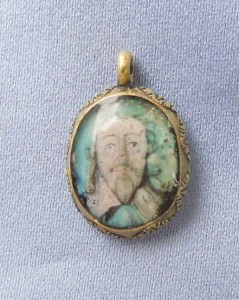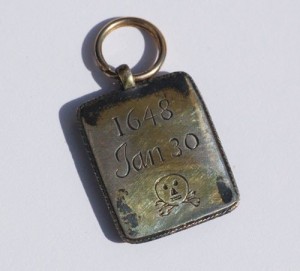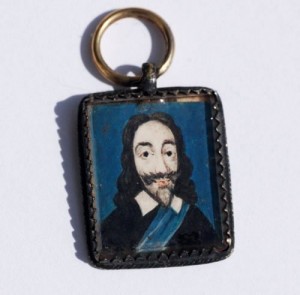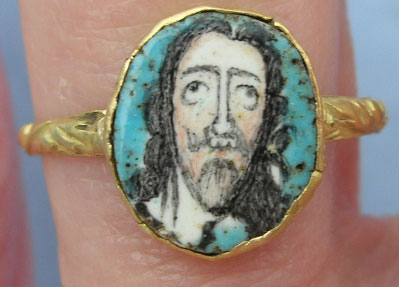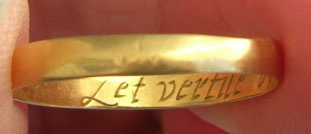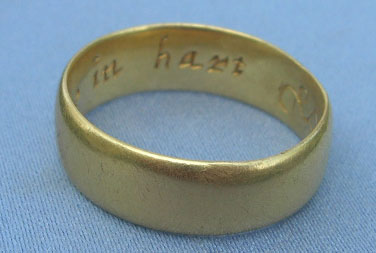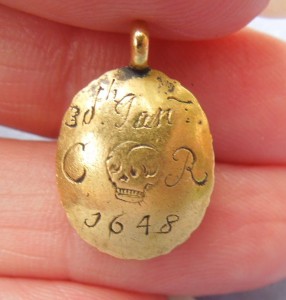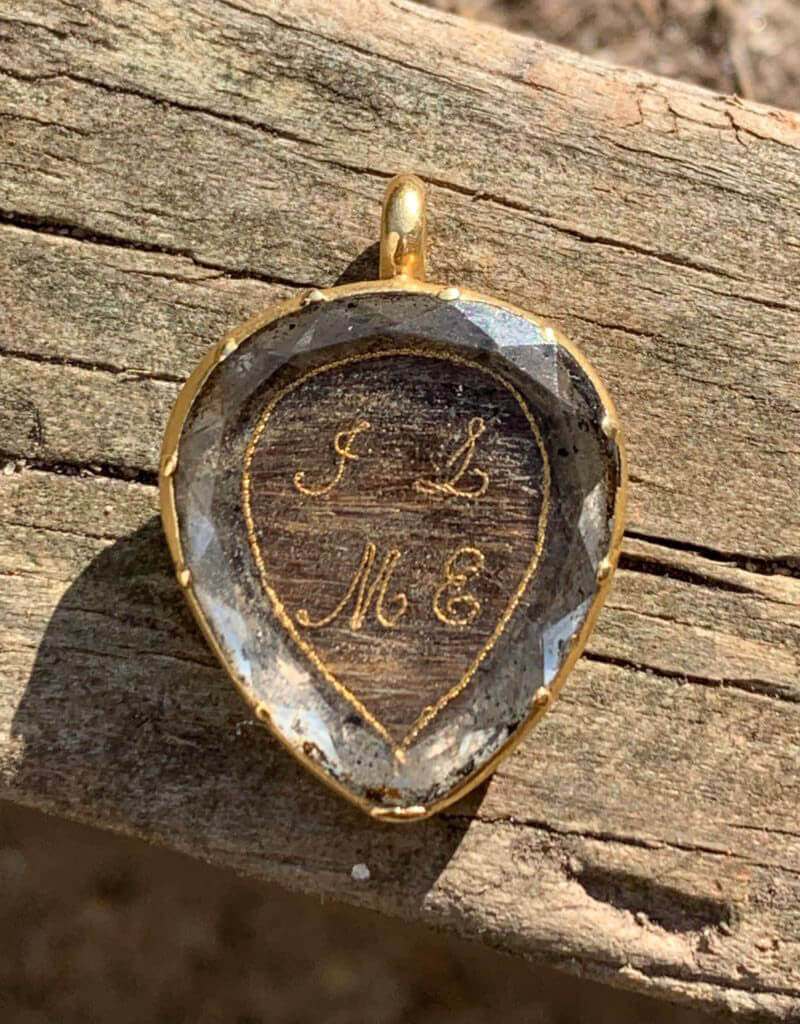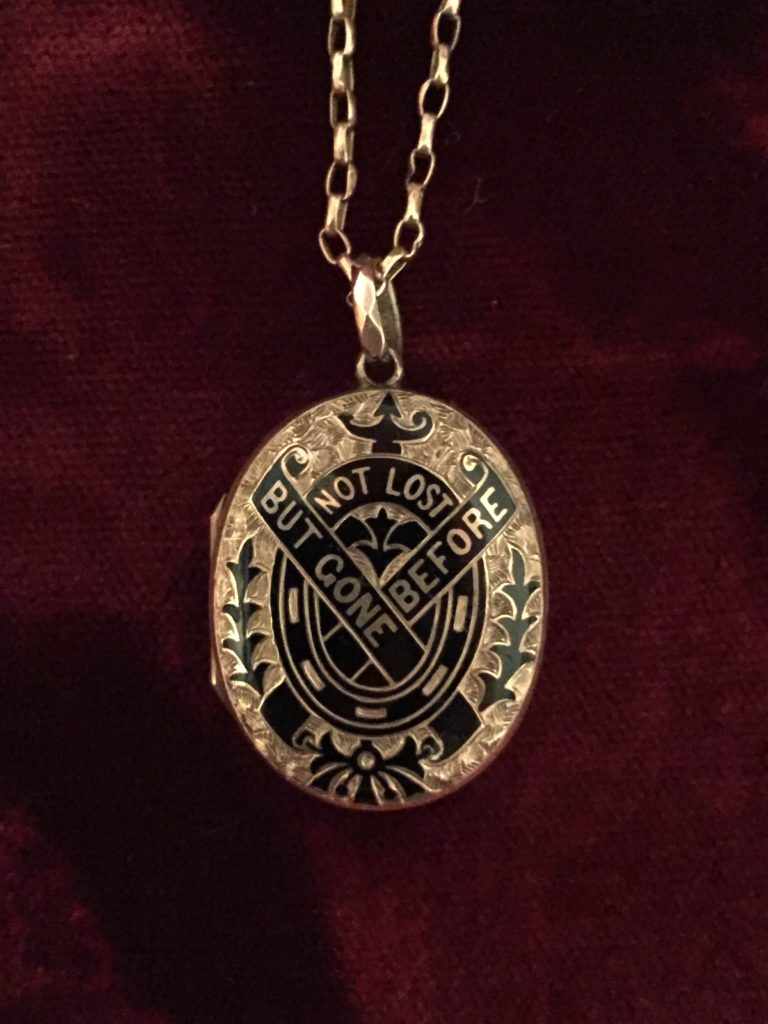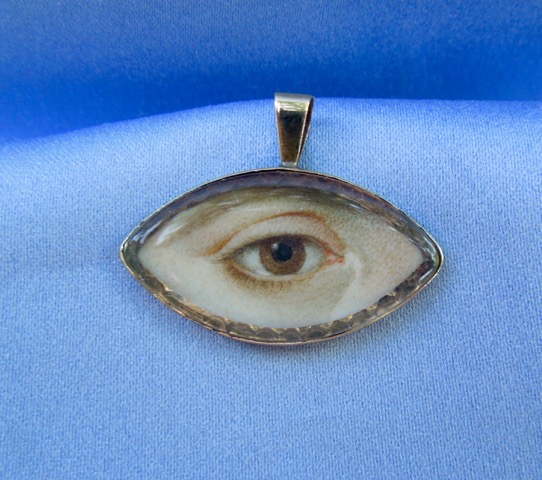Charles I Royalist Pendant, Jan 30, 1648
Charles I was born on the 19th of November, 1600 and executed on the 30th of January 1649, facing a tumultuous rule which temporarily ended the monarchy in England. His death would spark a Royalist movement that would lead to the rise of the mourning industry in jewellery; creating the affectation of wearing a jewel for sentimental purposes – a jewel that was accessible for all classes and not relegated to the aristocracy. It also bought an immediacy to mortality, questioning the very principals of religion and final judgement.
Definition
Due to the lack of standardisation of the portraits at the time and the class-transcending need of the king’s portrait for Royalists, many variations of the Charles mourning miniature exist. Some range from being naive to incredibly detailed. For others, they were created as studies after the Restoration, leveraging their portrait based upon other studies of Charles I.
One way to look through the mix of different Charles I portraits is the date on the reverse. The Royalist would mark this date as a fundamentally important one; it marked the end of the monarch and the establishment of the Commonwealth of England.
Whilst history documents the monarch’s execution on the day of January 30, 1649, the date 1648 on other pieces are based on the Julian calendar, which was used in England until the 18th century. Using the Julian calendar, the year did not commence until March, so many contemporaneous mourning pieces record the execution as having taken place in 1648. Other than the date, the eyes of the king are the second most important factors to note for modern collectors. The eyes, facing up, were created for the purposes of mourning or memorialising Charles, as the eyes are looking towards the heavens. The background is another factor, with some pieces showing dark colours behind the king to denote death. Blue, often a colour to denote royalty, was one of the most popular colours to be shown in the background, as can be seen by the following pieces:
As there was no true standardisation, apart from the image of the king, these rings, lockets and pendants have a remarkable variety. This variety shows what part of society would have wanted to wear the jewel and shines a light on just how resonant the Royalist movement was. Some are base metals or silver, others gold with more interesting design motifs. In this pendant, we see the designs around the border, showing a Baroque design that doesn’t allow for a true oval shape, but undulates the shape with the flourish.
Sentimentality in the Early/Mid 17th Century
Sentimentality in the early 17th century had changed dramatically from the 15th century, with the 16th century being a time of greater social movement and influence of the interpersonal relationship. Jewellery, by its very nature, is sentimental; worn for affection, or to gain affection. This can be seen in the rise of the mourning ring being an item that would be factored into a will and also the ubiquity of the posie ring.
Posie rings, otherwise known as ‘poesy’, ‘posy’ or ‘posey’, are one of the primary catalysts for the mourning and sentimental rings that generated their own industry post 1680.
Without the standardisation of the English language and the written reliance on Latin previous to the dictionary in 1755, posie rings are a remarkable time capsule for phonetically capturing their surrounding language in a jewel. From a status perspective, this utilisation of language is accessible to a strata of society that didn’t have the luxury of formalised education, opening up sentimental jewels to new levels of society. Basic sentiments of love etched into silver and gold bands could now be given as a secret love token for a growing middle class. In rings previous to the 16th century, more common would be the inscriptions written in French, Latin and Norman French.
Chapbooks, pamphlets containing popular literature, were a popular source for many of the sentiments written inside the posie rings. These cheap pamphlets grew in popularity, as they were sold cheaply (commonly a penny or halfpenny) and contained many popular ballads from the time. This pre-dates mass produced media of the early 19th century, when steam presses led to the rise of cheap newspapers. From the mid 16th century, these cheap and crudely produced booklets contained relevant popular content that varied from entertainment to political and religious content. Here, the relation of the ring to the popular literature is the key factor in understanding just how the posie’s relation to society. They were jewels that could be for the commoner, but also transient as a style of love token through society because of their simple statements.
Look towards the nature of hair and its status as a gift in jewellery from the 17th century. Prior to the rise of the hairworking industry and its prominence in mainstream jewellery, gifts of hair were considered tokens of affection and love between two people. Bury refers to The Relique (or The Relic) by poet John Donne (1572-1631) and its very early reference to a hair bracelet:
“When my grave is broke up againe
Some second ghest to entertaine,
(For graves have learn’d that woman-head
To be to more than one a Bed)
And he that digs it, spies
A bracelet of bright haire about the bone,
Will he not let us alone,
And thinke that there a loving couple lies”
Donne speaks in metaphysical terms about the unifying nature of spiritual love, as when he and his lover are dug up, they remain the symbol for holy and eternal love. From this, the poem is an excellent perspective on the sentimentality of hairwork at the turn of the 17th century. Wearing hair was an encompassing symbol of union and love between two people.
Donne wasn’t unique in his wearing of a hair bracelet, however, as Count de Grammont viewed several people wearing hairwork bracelets in the Court of the restored Charles II, circa 1660. This ties in with the rising prominence of other sentimental jewellery at that time. From love tokens, such as posy rings, to hair woven under crystal in slides, brooches, rings and other forms of jewellery, sentimental jewellery was rapidly evolving over the 17th century. Within these forms of sentimental jewellery, the use of hair became ever more prominent. Another example from 1647/8 of the popularity of hairwork within mainstream culture can be seen in Mary Varney’s letter to Sir Raplh Varney, asking to send locks of their daughter’s hair “to make bracelets? I know you could not send a more acceptable thing than every one of your sisters a bracelet”. At the time, Ralph was living in exile in France during the Protectorate. Hair tokens within families was the more common practice, but as jewels grew as a social device, so did their nature as a personal statement.
Indeed, the period surrounding Charles I was steeped in the growing sentimental culture, bolstered by Charles II and his support of the arts. Fundamentally, however, the act of having a keepsake of a loved one was intrinsic to the self. This influence of the human being important was born from religious challenge at the time.
Charles I, Challenges and Religion
Charles I’s reign was faced with great conflict, the combination of which would lead to his execution. Married (by proxy) to the Catholic Henriette Maria at Notre Dame de Paris, there was an internal concern of Charles wanting to repeal Catholic restrictions. During the 1620s, there was much friction between the Catholics, Calvinists, Puritans and Anglicanism, which led into the external fear from foreign conflict that threatened cultural thought through protection. The kingdom was challenged by other cultures which could actively take over England and that would lead to a society threatened.
Money was an incredible hardship of Charles I’s reign, leveraged by the deficit from Elizabeth I onwards. Regulation of finance by parliament led Charles to focus upon taxation. The need to gain revenue was intrinsic to the continuity of the kingdom, which would counter legislation, but provide protection of the kingdom. The tonnage and poundage collection of taxes for royal collection provided a great deal of debate.
The Thirty Years War had spread, which led Charles to declare war on Spain (where Philip IV had defeated Emperor Ferdinand II). This was to be a relatively low-cost naval attack on Spanish colonies in the New World. Charles moved inland at quite high expense, but was not given funding required by parliament, only imposing more regulation on wartime expenditure upon him with annual review. In the House of Lords, the Duke of Buckingham had not passed the bill, who was supported by Charles. This led to much dissension in parliament of contention towards the Charles’ supporting of Buckingham, leading to their dismissal at Charles’ request. Buckingham had led a failed incursion against Spain only expedited this negative faith in his leadership. After a misguided assault on the French coast by Buckingham to defend the Huguenots at La Roche, the goodwill of the king’s marriage to a French princess was strained and in 1628, Buckingham was assassinated.
Debate over the tonnage and poundage issue had begun in parliament, based around an MP who had failed to pay the cost. Much reaction came about this, and its factor towards Charles, leading towards further religious debate that led Charles to dissolve Parliament (arresting nine parliamentary leaders). This began Charles’ personal rule for eleven years, where he found peace with France and Spain.
The closing of Puritan organisations and dismissing non-conformist clergymen by the Archbishop of Canterbury, William Laud, in 1633 threatened other religions that were not the Church of England. The Book of Common Prayer became the authorised sacrament, with punishment to those who countered it. In Scotland, however, this would prove to be a mistake, as the book was instituted without consulting the Scottish Parliament or the Kirk, where it was seen as another element of dominance by the Church of England. The Church of Scotland had denounced the book in 1638, causing Charles to march on Scotland, thus began the First Bishop’s War.
Much of Charles’ issues in the war were drawn to the parliament and the lack of funds needed to create a successful campaign. Charles attempted to buy time in 1640 by calling the Irish and English Parliaments for more funds, but only the Irish offered a subsidy of 9,000, while the English Parliament was at loggerheads. Conflict would continue with the Scottish until Charles summing the Long Parliament, which assembled in 1640.
The Long Parliament began to impeach the king’s councillors for high treason for its right of being, which lead to the Triennial Act which meant that the king needed to summon Parliament at least once every three years, otherwise, other authorities could summon Parliament. In 1641, the dissolution of the English Parliament without its consent was deemed lawful. Once again, the tonnage and poundage act came into factor for high taxation, making Parliament rebel. The Irish and English Parliaments were challenged by the influence of the Protestant land ownership in Ireland, leaving Charles to have a lesser influence in Ireland. The Grand Remonstrance, a list of grievances against action by Charles’ ministers since his reign began, was passed in the House of Commons in 1641, leading to a breakdown in relations to the Irish Parliament and faith in Charles’ rule. The Irish rebellion needed funds, and Charles requested this from the Parliament, but fear led to the Militia Bill, which was a request to gain the army from the king.
Charles was quickly losing power, with even rumours that his Catholic wife about to be impeached. With the invading Scots being a threat, five members of Parliament were suggested to have colluded with them. Charles stormed Parliament and was embarrassed to have he five members fled.
In 1642, Charles raised an army, while Parliament called for a militia. The first major battle in the First Civil War was the Battle of Edgehill. Various skirmishes happened until the Battle of Naseby, where Parliament got sure footing. From this point, the Scots withdrew and the king was in custody until his execution.
From the pressure that led to Charles’ demise, it shows that the outlook of the populace wasn’t based in the faith of one monarch, but the challenge that came from eternal cultures. With influences from the Scottish, Irish and Europe, England was in a space where it needed to quantify its measure of belief, rather than put its faith in a ruler which had previously created divine protection.
Jewellery in this time became more of a necessity for personal relationships, Jewels were now the measure of the life and love of the person who wore them. Rather than being a token of status in society, they were a token of the self.
Restoration
This is a jewel which was worn to create the reestablishment of the crown and, much like any Charles I piece, cannot be understated. Memorial jewels that resonate through a culture in mourning, or in need, are necessary for the continuity of thought. This is the concept that creates change in a society, a symbol of their need which fires the passions of the population. As the higher quality pieces would be worn for the social consequence of their need, the lower end of the Charles I jewel resonate better through their social status, leading to a society that wanted their monarch returned. In this jewel, we see a piece that has been worn through hardship, though of high society.
Further Reading
> Charles II
> Princess Charlotte




